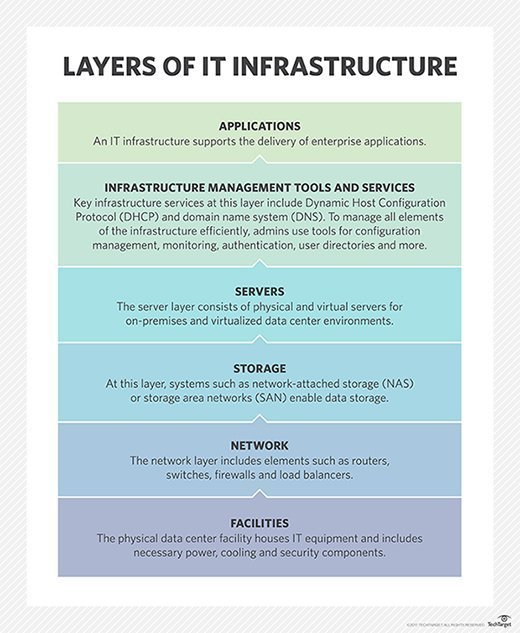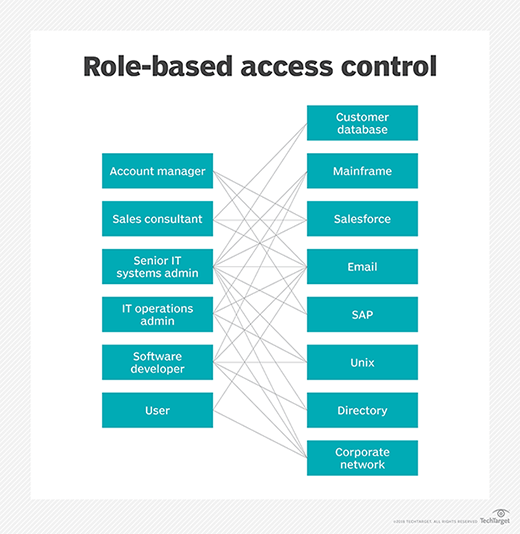Microsoft SCOM (System Center Operations Manager)
What is Microsoft SCOM (System Center Operations Manager)?
Microsoft SCOM (System Center Operations Manager) is a set of tools for infrastructure monitoring and application performance management. SCOM is part of Microsoft's System Center, a product that helps simplify enterprises' infrastructure deployment, configuration, management and monitoring. It also enables organizations to improve the agility and performance of their infrastructure and virtualized software-defined data centers (SDDCs).
Microsoft System Center includes numerous tools to simplify data center management, both on premises and in the cloud. These tools ease the monitoring, automation and provisioning of software-defined enterprise data centers and enable data center admins to diagnose and troubleshoot issues across the infrastructure.
SCOM is a flexible and cost-effective tool for infrastructure monitoring and performance management. This software enables IT admins to monitor the operations, installed services and applications, and connected devices on multiple computers from a single, centralized console.
The console displays the health, performance and availability of all these monitored objects, identifies problems and then resolves them using SCOM's list of prioritized recommendations. With SCOM, admins can monitor the data center and cloud infrastructure -- public and private -- and take steps to ensure consistent performance and continuous availability of vital enterprise applications.

Important components of Microsoft SCOM
System Center Operations Manager monitors various computers, devices, applications and services in the enterprise IT environment and tells admins which of these monitored objects are and aren't healthy. It also sends alerts when it identifies problems, provides useful information about the identified problem, finds its cause and implements a possible solution.
To perform all the above tasks, various components work together in SCOM. These components are part of a management group, which is created when SCOM is installed and is the basic unit of functionality. The components may exist on a single server or may be distributed across multiple servers. SCOM components include the following:
- Operational database. SQL Server database that contains all configuration data and stores monitoring data for the short term.
- Data warehouse database. Also a SQL Server database, albeit one that stores monitoring and alerting data for historical purposes, i.e., long-term storage.
- Management server. Administers the management group and communicates with the database.
- Reporting server. Builds and presents reports created from data in the data warehouse database.
- Agent. A service installed on a computer to collect monitoring data, create alerts and run responses; it reports to a management server in the management group.
- Monitoring Agent service. Collects performance data, executes tasks and sends collected data to the management server.
Key features in SCOM 2022
In the latest 2022 version, SCOM supports enhanced role-based access control and new built-in roles to enhance user experiences. For example, it supports a Read-Only Administrator role that provides read permissions in SCOM, including reporting. The Delegated Administrator role is similar to the Read-Only Administrator role, except for reporting permissions. Admins can also create custom user roles with specific permissions in SCOM.

Another new feature in SCOM 2022 is organizations with Windows New Technology LAN Manager security protocols disabled can select the Reporting Manager Authentication Type as Windows Negotiate during installation. Further, admins can choose to close an alert of an unhealthy health monitor. They can also upgrade SCOM databases with an existing SQL Always-On setup without having to make post-configuration changes.
In SCOM 2022, the Secure Hash Algorithm-1 certificate is encrypted with SHA-256. Also, groupId is supported in the Get Alert data API, and the source -- fully qualified domain name -- can be viewed while tuning a management pack. Other useful features in SCOM 2022 include the following:
- Support for sort option by column in Overrides Summary.
- Values of customized registries are retained when an upgrade is applied to SCOM 2019.
- Data warehouse registry details retained when nonprimary management servers are upgraded.
- The web console utilizes Hypertext Markup Language 5 (HTML5) instead of Silverlight.
- Support for .NET 48, Ubuntu 20, Oracle Linux 8, Debian 10 and Debian 11.
- Alert source (monitor/rule) viewed under Console > Monitoring > Active Alerts.
- Dependency on LocalSystem account removed.
- All change tracking reports available in a single folder (Change Tracking).
System requirements for SCOM
To maximize benefits from SCOM, it's important to first check system requirements and ensure those requirements are met. That said, SCOM is designed to be flexible and scalable, so the hardware and software requirements for specific scenarios may differ from the below guidelines:
- Recommended limits must be observed for all monitored items, including agent-monitored computers, simultaneous operations consoles, agent-managed and Unix or Linux computers per management group, and network devices managed by a resource pool with three or more management servers.
- The number of applications for application performance monitoring should be less than 400.
- The number of URLs monitored per agent should be less than 50.
- Minimum of 8 gigabytes of memory and 10 GB of disk space is required to configure roles like Management Server, Gateway Server managing up to 2,000 agents, Web Console Server and SQL Server Reporting Services server.
- For any SCOM server role, the minimum x64 processor requirement is a four-core 2.66 gigahertz central processing unit.
- To configure the Operations Manager management server, the minimum Windows Server version required is 2019 Standard or Datacenter.
- For the Operations Manager Reporting server component, the Standard or Datacenter version of Windows Server 2019 or Windows Server 2022 is required.
Additionally, when upgrading installations of System Center 2019 - Operations Manager that's integrated with one or more System Center components, admins must ensure that Orchestrator is upgraded first, followed by Service Manager, Data Protection Manager, Operations Manager and Virtual Machine Manager.
Other minimum system requirements to configure Microsoft SCOM include the following:
- Internet Explorer (IE) 11 and Silverlight 5 to ensure backward compatibility of client browsers with Silverlight-enabled dashboards.
- Windows PowerShell version 2.0 or 3.0 for Operations Manager console.
- .NET Framework 4.7.2 or 4.8 for management server and gateway server.
- Microsoft Edge version 88, IE version 11, Google Chrome version 88 for client web browser for HTML5 web console.
- Configured Hypertext Transfer Protocol or HTTP Secure binding.
- Windows 10 and Windows 11 client operating system.
- Active Directory Domain Services (AD DS) healthy and maintained at certain minimum configuration levels.
- Domain name system installed and healthy to properly support AD DS and SCOM.
SCOM Assessment
SCOM Assessment is a proactive service to diagnose potential issues in the Operations Manager environment. These issues may occur in both on-premises and Azure virtual machine (VM) -- i.e., infrastructure as a service -- environments. The goal of the service is to provide admins with specific, actionable guidance to mitigate risks to the SCOM environment. These recommendations are prioritized and grouped across six focus areas so admins and their staff can do the following:
- Quickly understand where risks occur and the level of each risk.
- Assess the overall health of the SCOM environment.
- Take steps to decrease -- and, if possible, eliminate -- identified risks.
- Improve overall IT health, performance and stability.
To garner these benefits, SCOM Assessment must be set up. This takes about an hour. It can be done by linking the organization's Azure subscription to Services Hub and then adding Assessment from Health > Assessments in Services Hub. After running an assessment, the results can be viewed in Azure Log Analytics and Services Hub Dashboard. Selecting View all recommendations against the active assessment reveals the results, along with a list of prioritized and grouped recommendations to improve infrastructure health and performance.
See why you should adopt an SDDC architecture with caution and proper planning.






